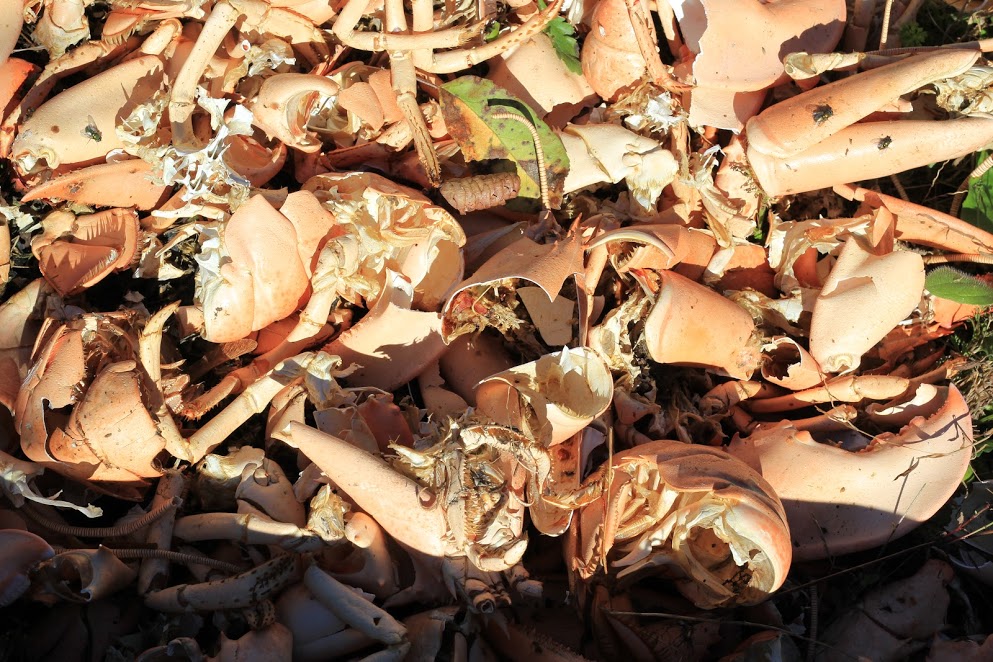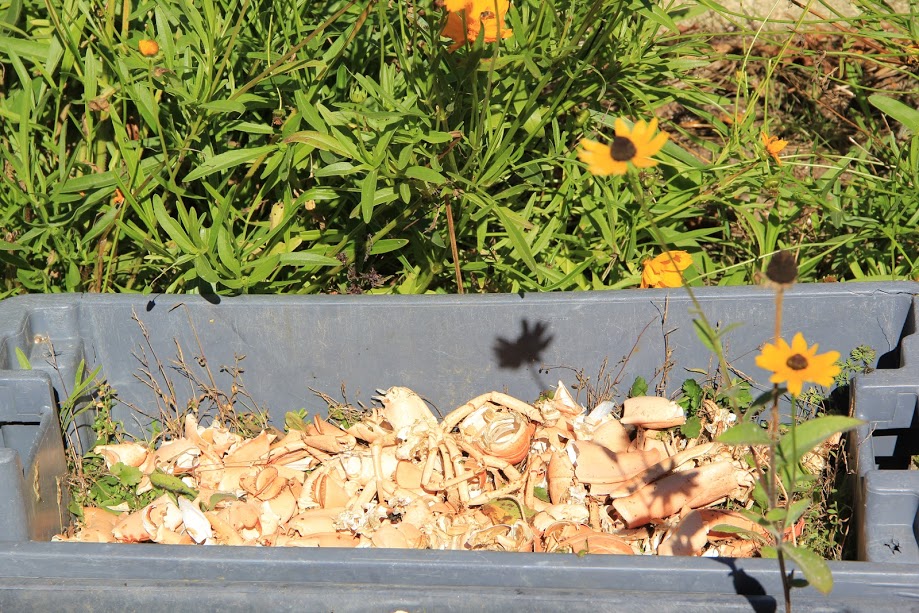To achieve great compost, a true balance is always the goal! Balancing the level of moisture in a compost pile will help it break down properly and quickly, while balancing the content will produce the richest, healthiest compost for your lawn, garden or flower beds! Achieving the proper moisture in a compost pile depends on the pile’s location—if in a very arid scape, more ‘green material’ (wet/fresh ingredients) are required, whereas in a more humid environment, more ‘brown material’ (dry ingredients) is needed. It should be dry enough that it’s not ‘soupy,’ or liable to rot, but wet enough that it produces good heat to encourage break-down of added materials. ‘Brown material’ can include pine needles, dry leaves, sawdust or wood clippings. ‘Green material’ includes (but is certainly not limited to) grass cuttings or food scraps. Constant turning/rotating of a compost pile is necessary for consistent break-down throughout the pile.
Lobster shells are considered ‘green material,’ and require some steps for quick break-down. The shells should be rinsed thoroughly, to avoid adding a high volume of salt to the composition of the compost. Additionally, they can be crushed or ground up before being added to your compost pile to speed up their break-down time. If your compost pile is in direct sunlight, then this step isn’t totally necessary. The direct sun will make shells quite brittle within a few weeks! The shells can attract some animal attention, so if this creates a problem, be sure to bury the shells under a good layer of already composting (less attractive to animals) material. If shells are going to be buried, then breaking down the shells a bit first is a good idea!

Including lobster tails and shells in your compost pile provides many benefits! The shells provide a good source of chiton, calcium, magnesium, and nitrogen. Their slow break-down promotes good drainage for the compost pile overall, but their chiton content helps retain the proper amount of moisture needed, making lobster shells an excellent addition to compost piles in both dry and humid areas! If your soil tests low for calcium, magnesium or nitrogen, lobster shells are a great, all-natural remedy!
Plants that benefit from extra calcium include: apples, broccoli, brussels sprouts, cabbage, celery, cherries, citrus, conifers, grapes, legumes, peaches, pears, peanuts, potatoes, roses, tobacco and tomatoes. If you grow any of these items, and they look lackluster, try a soil test, and see if they might benefit from the minerals found in lobster shells! Remember, too many lobster shells won’t help the soil’s health overall, it’s all about balance! If you live far from the coast, you can order live Maine lobster from Greenhead Lobster, or even our frozen Stonington-caught Maine lobster tails, and use the shells in your compost far from the sea! Even if it takes a while for shells to break-down, it is quite the novelty to see the shell of a lobster peeking out beneath your plants, reminding you of the sweet taste of Greenhead Lobster! Cheers to healthy soil, eating lobster and working outside!

